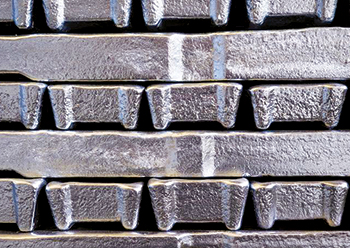
 In the Mena region, steel demand remains resilient owing to the oil-exporting countries benefitting
In the Mena region, steel demand remains resilient owing to the oil-exporting countries benefitting
Global steel demand will contract by 2.3 per cent this year to 1.79 billion mt, industry association Worldsteel said, revising down its earlier (April) forecast of 0.4 per cent demand growth to 1.84 billion mt.
In 2023, steel demand is forecast to recover by one per cent, totaling 1.81 billion mt.
“The current forecast represents a downward revision over the earlier forecast, reflecting the repercussion of persistently high inflation and rising interest rates globally. High inflation, monetary tightening, and China’s slowdown contributed to a difficult 2022, but infrastructure demand is expected to lift 2023 steel demand slightly,” Worldsteel said in its short range outlook for 2022 and 2023 released last month.
“The global economy is affected by persisting inflation, US monetary tightening, China’s economic deceleration, and the consequences of Russia’s invasion of Ukraine. High energy prices, rising interest rates, and falling confidence have led to a slowing in steel using sectors’ activities. As a result, our current forecast for global steel demand growth has been revised down compared to the previous one. The prospect for 2023 depends on the impact of tightening monetary policies and central banks’ ability to anchor inflation expectations. Particularly the EU outlook is subject to further downside risk due to the high inflation and the energy crisis that have been exacerbated by the Russia-Ukraine war,” Máximo Vedoya, CEO of Ternium, and Chairman of the Worldsteel Economics Committee, commented on the outlook.
Interest rate hikes by the US Federal Reserve and the strength of the dollar have increased the risk of a recession in the US and will cause capital outflows from emerging markets, as well as dampening investment and consumer spending in general, Worldsteel said.
Risk is skewed to the downside because of monetary policy, inflation, the impact of Covid-19 on the Chinese economy, and the potential gas supply crisis in Europe.
CHINA
Steel demand in China contracted by 6.6 per cent in the first eight months of 2022. For the whole year, steel demand is likely to fall by 4. To 38 million mt. In 2023, new infrastructure projects and a mild recovery in the real estate market could prevent further contraction of steel demand. Steel demand in 2023 is expected to remain flat under the assumption that small new stimulus measures are to be introduced and lockdown measures will be largely removed in the later part of 2022. Significant downside risks exist if these assumptions are not met. The slowing global economy poses further downside risk for China, Worldsteel said.
ADVANCED ECONOMIES
Worldsteel expects demand from developed economies to decrease by 1.7 per cent in 2022 and marginally rise by 0.2 per cent in 2023. The association in April projected a 1.1 percent increase for 2022 and 2.4 per cent increase for 2023.
Sustained inflation and supply-side bottlenecks were exacerbated by the war in Ukraine, with the EU bearing the brunt of the economic consequences.
EU demand is forecast to fall by 3.5 per cent this year and by another 1.3 per cent next year. German demand is set to decline by 4.9 per cent this year, while Italian demand is expected to fall by 3.6 per cent. Projections have been revised from previous expectations of strong demand recovery — particularly for next year. The downward revisions are mainly because of high inflation rates and the energy crisis, which have forced shutdowns in steel production.
The forecast for US demand was also revised down, but to a lesser extent, as the US automotive sector is expected to maintain positive momentum owing to pent-up demand and improved supply chain logistics. A new US infrastructure law could boost investment and support steel demand, with demand forecasted to rise by 2.1 per cent in 2022, from a projected rise of 2.8 per cent in April.
Worldsteel slashed the outlook for Japanese and South Korean demand, with demand now expected to grow by 0.2 per cent and -2.5 per cent respectively, from an earlier forecast of 1.2 per cent. Contracting construction activity underpins these revisions.
DEVELOPING ECONOMIES
Worldsteel has revised down its forecasts for 2023 growth in emerging economies to 3.5 per cent, down by 1 per cent from the 4.5 per cent growth forecast in April.
India and Asean steel demand is expected to show strong growth in 2022 and into 2023, as urban consumption and government spending on infrastructure supports demand from the automotive and capital goods sectors. Worldsteel predicts a growth rate in India of 6.1 per cent in 2022 and 6.7 per cent in 2023, and of 5.8 per cent in Asean economies in 2022 and 6 per cent in 2023.
In Russia, steel demand was expected to contract by 20 per cent in 2022, when forecasts were made at the beginning of the Russia-Ukraine war. High oil prices and government support measures for construction have led to the forecast for Russian demand being revised to 6 per cent demand contraction. But Worldsteel now forecasts a 10 per cent contraction in Russian steel demand in 2023, as sanctions will increase in severity.
South and Central America, have seen major decelerations in steel demand, particularly from the construction sector. Construction has been affected by high inflation and rising interest rates, impacting the cost of material and reducing government spending for infrastructure projects.
In the Middle East and North Africa (Mena) region, steel demand remains resilient owing to the oil-exporting countries benefitting from high oil prices and mega infrastructure projects in Egypt. However, high oil prices have not led to a major increase in new construction projects in the GCC countries as governments are trying to build up fiscal buffers.
But there are positive signs for demand growth forecasts for 2023, with Turkish steel demand anticipated to increase by 4 per cent compared with this year. Brazilian demand is expected to grow by 5 per cent in 2023.



